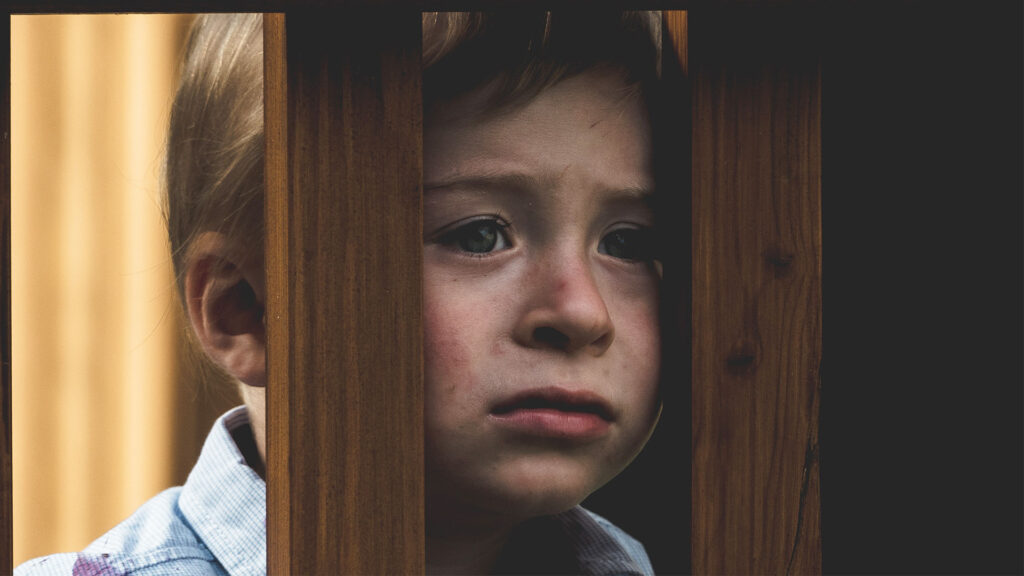Separation anxiety is a normal response in infants and toddlers. Young children become upset or frightened if they lose sight of their parents. However, the condition fades with age; most children outgrow it by age three.
Sometimes, the condition persists and intensifies in older children, teens, and adults, leading to separation anxiety disorder (SAD). The disorder becomes apparent when a child is six years old and afflicts nearly 4% of children between the ages of seven and 11 in America.
Children with this disorder often become clingy to parents, siblings, or caregivers. They become extremely distressed and may develop physical signs of anxiety when separated from them.
This article will explain what separation disorder is, its causes, symptoms, and risk factors. It’ll also cover diagnosis, treatment options, and how to cope with the mental disorder.
Understanding separation anxiety disorder
Separation anxiety disorder is a complex, multi-faceted mental health condition that’s highly misunderstood. Parents or caregivers often view it as part of normal childhood development or simply as clinginess. SAD is often dismissed as a character flaw rather than a legitimate psychiatric condition.
Living with separation anxiety disorder makes a child view the world through a lens of extreme fear. They’ll likely spend sleepless nights obsessing over every terrible thing that could happen to their loved ones. As a result, children become incredibly clingy, and it hinders their ability to lead a normal, healthy life. They seek to avoid instances that may separate them from loved ones or places they feel safe.
According to the National Health Library, “Untreated anxiety disorders in children can significantly impair quality of life, lead to comorbid psychiatric conditions, and interfere with social, emotional, and academic development.”
What is separation anxiety disorder?
Separation anxiety disorder is a psychological condition characterized by intense worry and distress about being away from loved ones or attachment figures. The resultant anxiety leads to persistent efforts to avoid separation, such as reluctance to sleep alone or refusing to go to school.
When a child with SAD anticipates separation, they may display extreme distress. They may show overt symptoms such as crying, tantrums, and nightmares, or experience physical symptoms such as headaches or stomach aches.
Normal separation anxiety vs. separation anxiety disorder
Normal separation anxiety is a regular part of infancy and early childhood development. It diminishes as the child matures, leaves no lasting effects, and doesn’t require professional intervention.
Conversely, separation anxiety disorder is a diagnosable mental health condition that requires a professional diagnosis and treatment. With SAD, a child’s symptoms become excessive and persistent and interfere with daily functioning.
Separation anxiety disorder in children
Separation anxiety disorder is the most frequently diagnosed anxiety-related disorder in children. It makes up 50% of anxiety-related pediatric cases referred to mental health specialists for treatment. Childhood SAD is usually the earliest anxiety disorder to present in children. It peaks during middle childhood, between 7 and 9 years of age, and affects about 4% of children.
Symptoms of separation anxiety disorder
For a SAD diagnosis, the symptoms must last at least four weeks and cause significant distress to the child. Key SAD symptoms in children include:
- Extreme distress before or during separation from a loved one
- Intense worry about their well-being or that of their attachment figure
- Persistent and excessive school refusal
- Recurring nightmares or fear of sleeping alone
- Extreme avoidance of being alone
- Excessive clinginess
- An unhealthy preoccupation with separation
- Tantrums, crying spells, or emotional outbursts when facing separation
Besides these symptoms, children with SAD may go to great lengths to avoid separation from attachment figures.
Support for separation anxiety
Separation anxiety disorder in young children
Excessive fear of separation from attachment figures is the primary characteristic of separation anxiety disorder in children. Besides being clingy, children with separation anxiety disorder often present physical symptoms.
Most parents focus on the physical symptoms and attribute the child’s anxiety to the illness. The child may develop many nonspecific physical complaints that keep them from going to school.
Children mainly develop somatic symptoms such as nausea, vomiting, and abdominal pains before or during separation. Parents fixate on treating the physical symptoms, unaware the problem is psychological, and so the cycle continues.
Sadly, less than 20% of children with this disorder get the proper treatment for the condition before turning 18.
Separation anxiety disorder in adolescents
While SAD has a similar effect on adolescents, its impact and expression are influenced by their developmental stages. Adolescents are unlikely to voice their fears and worries out loud for fear of embarrassment. However, they will constantly seek reassurance about their parents’ or romantic partners’ well-being and safety. Teens with SAD may go to extreme lengths to avoid separation, including resisting school attendance and exhibiting antisocial behaviors.
Impact on quality of life
SAD lowers the quality of life by forcing a child to experience life through a filter of extreme and irrational fears. It can interfere with their daily functioning, relationships, and well-being. Excessive fear precludes them from engaging in activities that build a happy and healthy childhood. Untreated SAD can also lead to the development of severe mental illness in adults.
Causes and risk factors
The exact cause of separation anxiety disorder is not fully understood. But the development of the condition is linked to various causes and risk factors:
Environmental factors
Since children thrive on stability and predictability, sudden changes in routine or moving to a new relocation can trigger panic attacks. Stressful life events, such as the loss of a loved one or divorce, can profoundly affect their sense of security and trigger SAD.
Attachment issues
Unpredictable and inconsistent caregiving experiences can undermine a child’s sense of security. It may lead to ambivalent attachment characterized by clinging behavior and heightened fear of abandonment. Attachment issues and over-reliance on caregivers breed a lack of confidence and autonomy, limiting the child’s independence.
Traumatic events
Trauma, such as physical or emotional abuse, experiencing a natural disaster, or witnessing domestic violence can erode a child’s safety net. Traumatic events can heighten their fear and anxiety of being separated from caregivers who provide a sense of security.
Family history of anxiety disorders
Children born in families with a history of anxiety are likely to inherit the genetic variations that predispose them to anxiety-related traits. These genetic variations affect the regulation of neurotransmitters and brain circuits crucial to anxiety management. Improper regulation of serotonin, dopamine, and gamma-aminobutyric acid (GABA) heightens anxiety responses, including separation anxiety.
Additionally, anxious parents often adopt overprotective parenting styles, creating high-stress households brimming with conflict and instability.
Diagnosis and treatment
Separation anxiety disorder is diagnosed through a comprehensive evaluation by a mental health professional. The process entails considering symptoms, medical history, and specific criteria outlined by the American Psychiatric Association (APA) in the Diagnostic and Statistical Manual of Mental Disorders (DSM-5).
Diagnostic criteria
Diagnosing and treating separation anxiety disorder requires a comprehensive evaluation by a psychotherapist or psychiatrist. Once a mental health professional diagnoses the condition, they can recommend a treatment plan.
Assessment
Assessing panic disorder in children is a multi-step process that considers the symptoms, their impact on daily functioning, and possible contributing factors. Clinicians use the DSM-5 to assess whether the child meets the SAD diagnostic criteria.
The diagnostic tool classifies mental disorders in children by symptoms, duration, and impact on a child’s well-being at home, school, and social settings. It allows seamless communication between clinicians and their patients while enabling them to make accurate and consistent diagnoses.
Treatment options
Treatment options for SAD include a combination of therapeutic interventions, parental involvement, and medication in extreme cases. Standard treatment options include:
- Cognitive behavioral therapy (CBT): Clinicians use CBT to teach a child to identify and challenge anxious thoughts and gradually develop coping skills
- Parental-child interaction therapy (PCIT): Parents learn how to counsel their child and help them cope with feared situations outside of therapy sessions
- Medication: In severe SAD cases, a psychiatrist may prescribe selective serotonin reuptake inhibitors (SSRI) alongside therapy to help manage anxiety symptoms
A multi-faceted approach to SAD treatment equips the child and their caregivers with a holistic strategy to combat the condition.
How to support loved ones
People with separation anxiety are often misunderstood because they struggle with relatively common issues. Providing empathy, understanding, and practical lessons can help support a loved one struggling with this condition. Here are proven ways to support a loved one and help them cope with SAD:
- Gain a better understanding of the condition, its symptoms, and its impacts on the person’s life.
- Help them identify and implement strategies to help them cope with and overcome their fear of separation.
- Encourage them to seek professional help and follow through with the appointments.
Being compassionate and understanding is not enough when a loved one suffers from SAD. You should help them seek professional help as soon as possible.
Coping strategies are incredibly valuable for individuals with crippling separation anxiety. They allow them to manage their symptoms and reduce anxiety in situations involving separation. Caregivers should create a supportive environment that supports and encourages a child to build confidence, learn coping skills, and gain autonomy.
How caregivers can help
Caregivers play a crucial role in helping children with SAD manage separation anxiety. They should provide reassurance and help the child build their confidence and independence. Here are proven ways caregivers can assist children with SAD:
- Creating structured and predictable daily routines that provide structure and predictability
- Using gradual exposure to build confidence and demystify separations
- Encouraging them to use positive affirmations
- Teaching them various relaxation techniques and coping strategies
- Offering verbal and physical reassurance
- Encouraging the child to express their fears and concerns about separation
- Providing opportunities for a child to handle age-appropriate responsibilities
Working with a mental health professional can help you pick the most effective approach to suit your needs.
Coping skills for children
Teaching coping skills can help children with SAD overcome or reduce the intensity associated with separations. Practical coping skills for children with SAD include:
- Practicing goodbyes so they can count on you to come back
- Creating a special goodbye routine to ease their fears
- Engaging in activities they enjoy to distract their mind
- Teaching your child to replace negative thoughts with positive, reassuring statements
Be sure to tailor the coping skills to the child’s age, developmental level, and individual needs. A clinician can provide further guidance and help you develop and implement effective coping strategies.
Get your child the help they need
If your child has a hard time letting go, they may be crying out for help. Stay mindful of the signs of separation anxiety disorder and provide the support they need to thrive and overcome the condition. If you notice your child is struggling with separation anxiety disorder and their quality of life is declining, don’t hesitate to consult a mental health professional for help.

